The second story from Miriah Falce, Enologist at Cairdeas Winery in the Lake Chelan AVA.
The Beginning and the End of the Winemaking Process, again.
It is I, the girl who previously said we had no major cold events to worry about and were just waiting on budbreak…did I jinx it?? I think we can all say that the freak weather we had this April was some of the strangest we have ever experienced! This month has been full of learning experiences, still waiting on bud break, and temps in the 50’s so really not too much has changed around here since last time I wrote, but I’m learning the art of patience and I know we’ll get there.
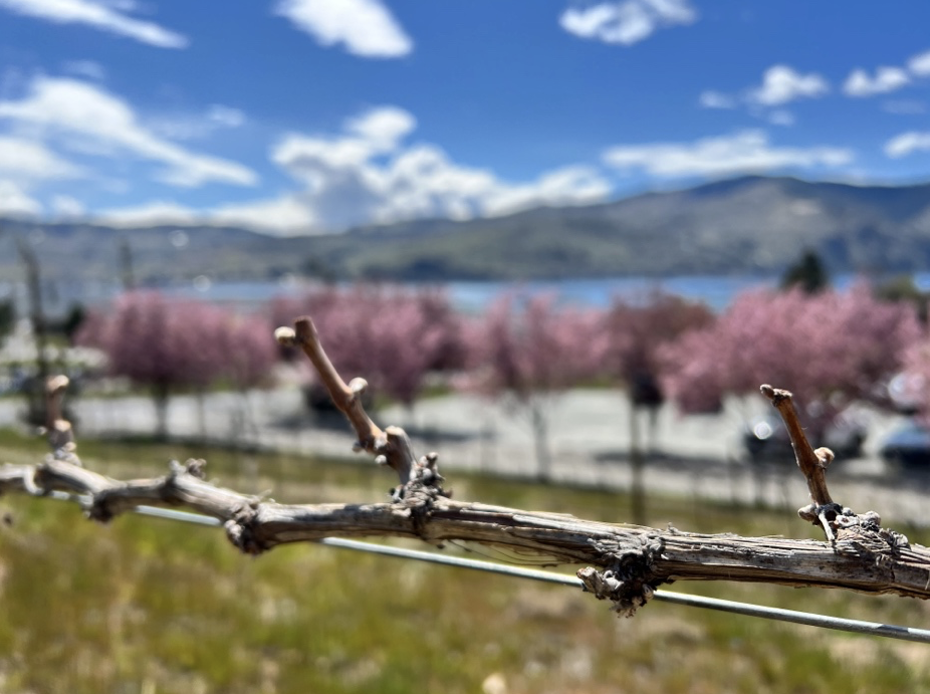
The Beginning: Bleeding and budbreak
After we pruned last month, the warming of the soil means we see one of our first signs of the vines waking up, bleeding/sap flow! As soil warms, the roots begin to draw up moisture from deep below in an effort to establish plant equilibrium again after dormancy. Getting the pipes moving again, if you will. As the pruning wounds haven’t calloused yet, the pressure builds and releases through the open surfaces, making its way out as slow and steady drips. On a sunny day when the whole block is in swing, you can look around and see the reflection of the light on every drip of each spur of every vine. It’s can be quite a sight. You’ll notice in the first picture that sometimes the constant dripping soaks the wood.
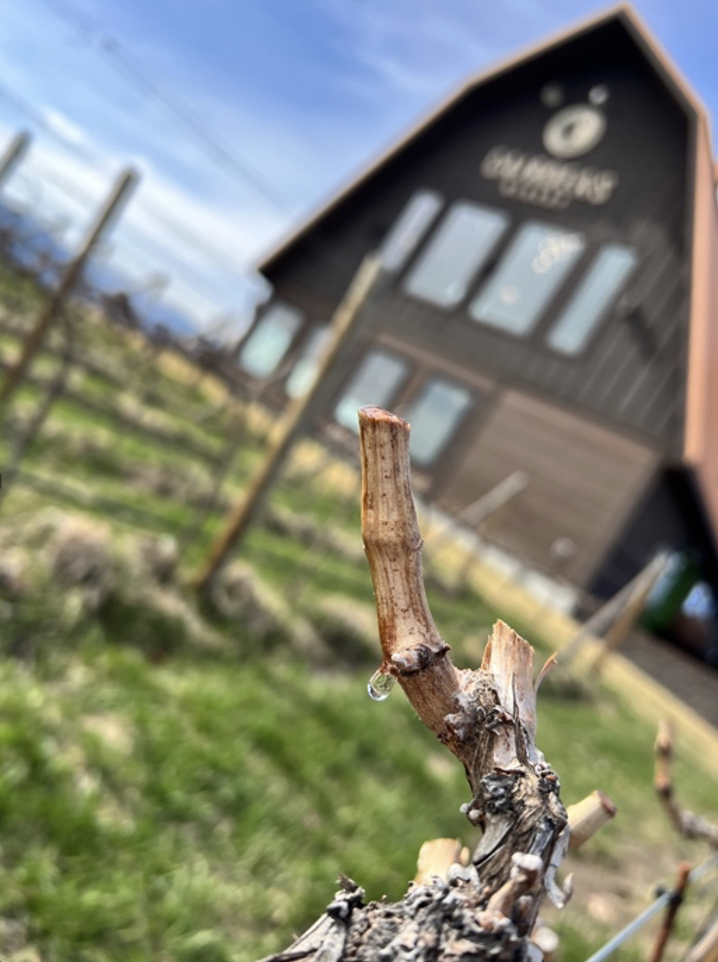
I attended a fungicide event in Hood River, Oregon to learn more about Powdery Mildew and Botrytis Bunch Rot and was completely in awe seeing all the apple and cherry blossoms and flowers and just how bright the Yakima Valley was! Cue my impatience as we still had none of that in Chelan. The following week I woke up to 5 inches of snow coming down and warnings of freezing temps! I was in the car at 5am on my way to Prosser for another seminar through the Washington Wine technical Group so I don’t have winery photos, but I sure was seeing it all over social media!
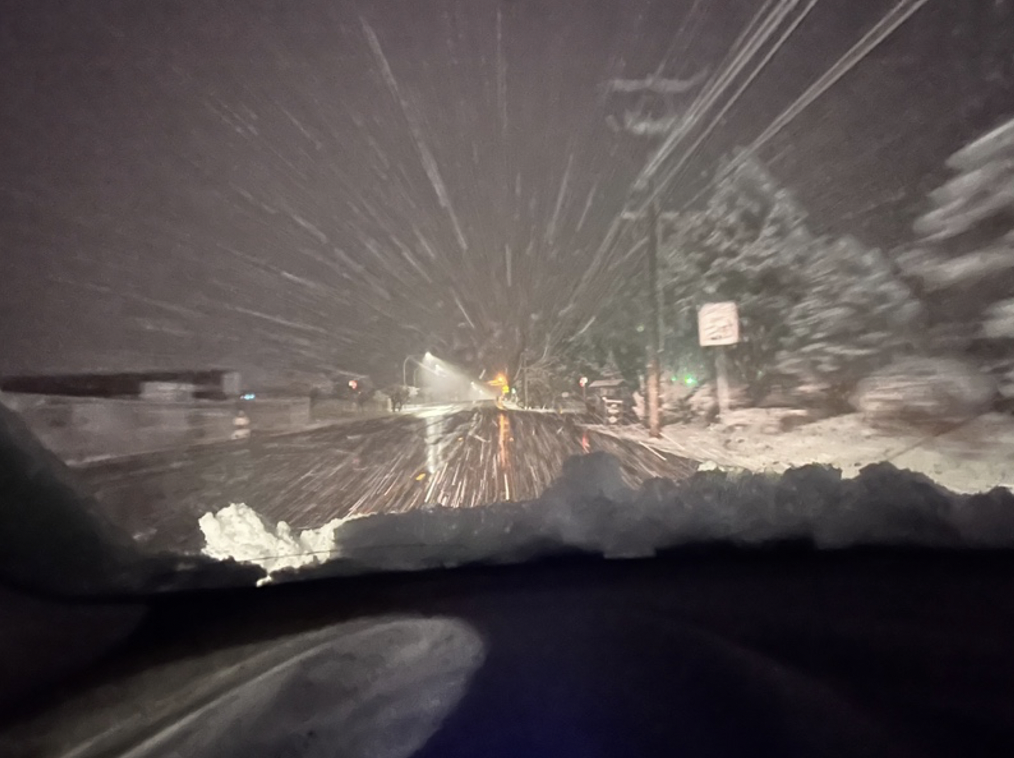
I remember years past when there would be a freeze warning (much earlier though and nothing like this) and waking up in the morning to the roaring of wind machines in my backyard and smoke in the air from smudge pots. Jaime and some of the other guys on the crew would be up all night, stoking the fires next to the cherries and running fans to try and protect the little buds and ward off the cold. As I pulled into Prosser that morning I couldn’t help but think of all the farmers from Walla Walla to Horse Heaven Hills to Prosser fighting the freeze, many of them at budbreak which is the most crucial time and when you absolutely don’t want a late freeze because it can ruin crops, and realized my impatience was a good thing and that our closed, tight buds were safe.
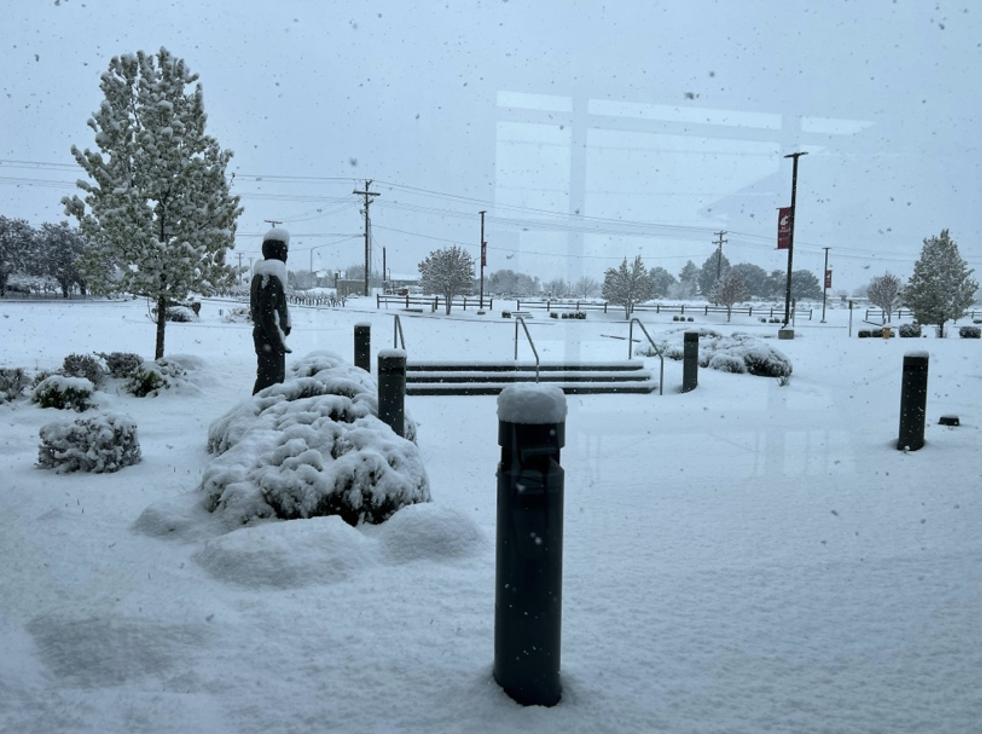
I saw pictures and videos of so many colleagues out in their vineyards at all hours, and my heart was definitely with them. Sadie was doing some incredible measures of frost protection, like using her overhead sprinklers along with wind machines, to keep the buds insulated by a layer of ice that was constantly wet to keep them from freezing, and her pictures and stories are absolutely mesmerizing. It’s mind blowing to me that some of our friends down in California were at bloom and already have a foot plus of growth!
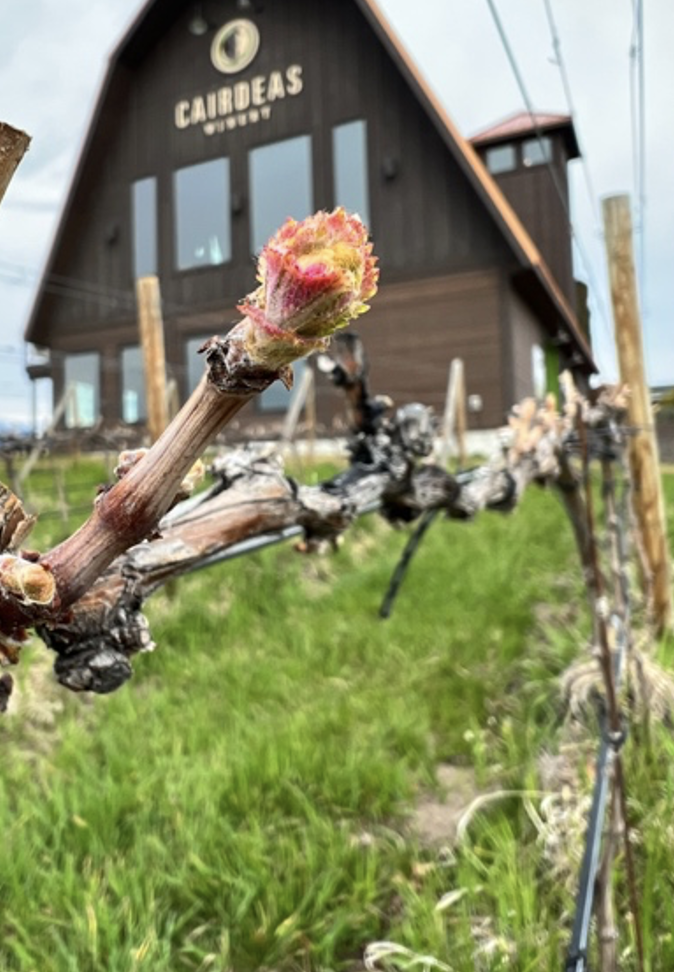
After the cold scare, I got to learn how to turn on irrigation and flush the lines so they’re ready for use. Everyone around here claims that bud break happens mid April and we’re getting very close to the end… but we’re still a little slow and on April 25th I found the one bud in all of our 3 blocks that was finally open! Go Picardan! There’s a few vines that are incredibly close, probably within the next day or two, and Clairette Blanch and Syrah are close behind.
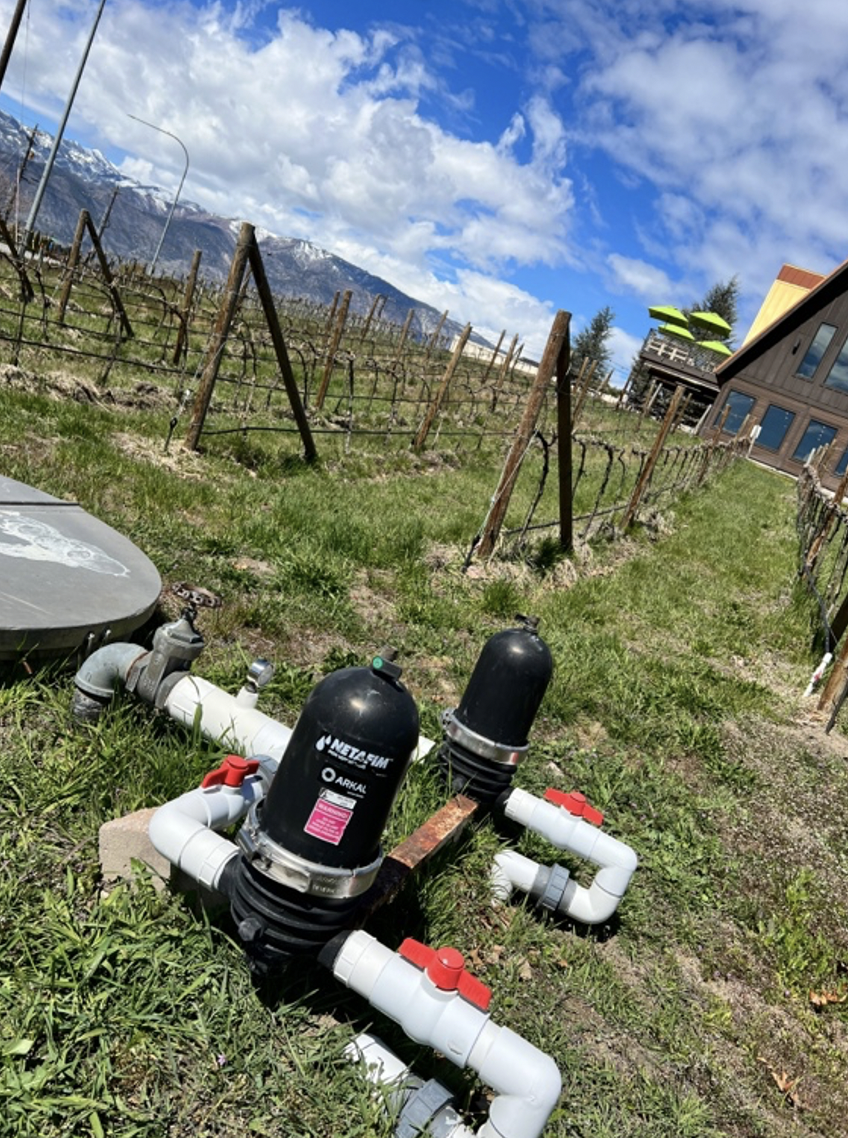
The End: Bottling
Quick update in the winery, along with everything else going on! We bottled all of our 2020 reds that we blended and worked on the previous month! It’s not financially or spatially feasible for small wineries to have a full time bottling line built in, and doing the slower more labor intensive “milker” might be hard depending on lot size, so there’s a great invention called bottling trucks!
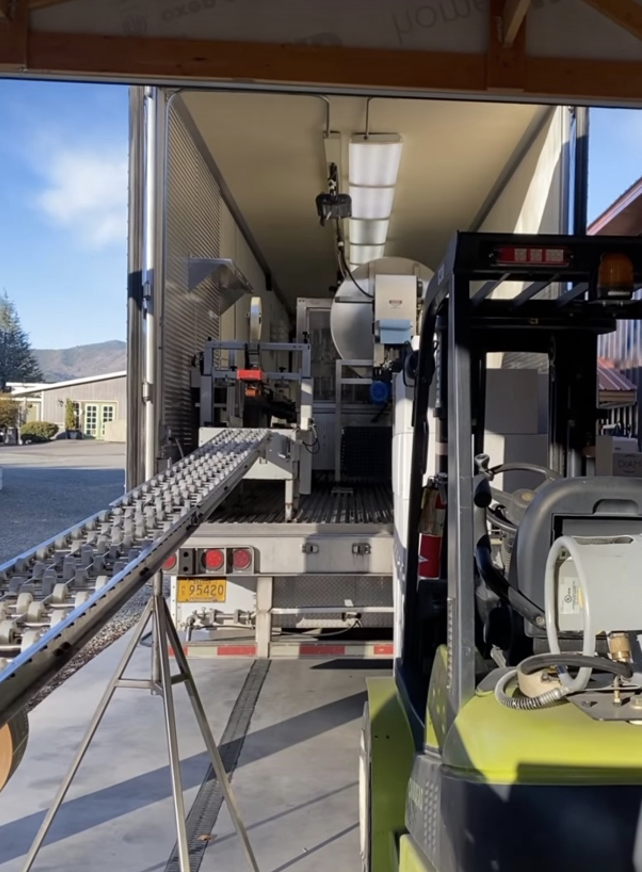
We do 3 big bottlings a year so being able to schedule them along with glass and corks is perfect for us. Basically, the forklift brings over a pallet of glass and one person picks up and flips a box of glass onto the table, where then a second person holds and shakes the glass out and onto the conveyer. At this point the automatic bottling system blows out any dust, fills the bottle, corks and labels them, and spits them out on the other side where two more people check labels and place them back into case boxes. They go down a ramp where the boxes are stickered and then placed onto pallets where once full, are wrapped and moved inside. It’s quite the process, a full day on your feet, lifting and carrying things. We have an amazing team and my dear friend Bernadette even came to help out! After moving two small lots to our August date, we were able to bottle 62 bottles a minute- 2561 cases of wine- for 30,732 bottles total!
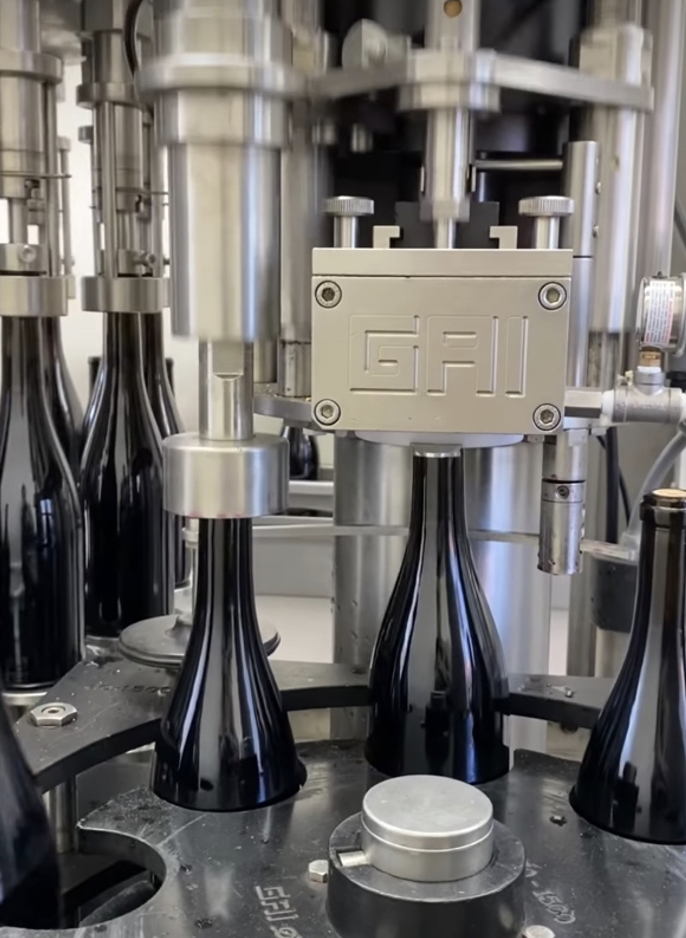
We do have an old 6 bottle filler that we used for our 2021 Clairette Blanche sparkling! At my last job I would travel down to Gruet, the sparkling wine facility in New Mexico and a huge reason why I have a love of Methode Champenoise bubbles. There we would create a huge yeast culture at the beginning of the two weeks, go in every morning at 3am for viability work under the microscope, and then inoculate the tanks each day and bottle while also reupping the yeast tank. I learned so much the times I got to help with that and it’s always fun being able to work with yeast for more than just harvest.
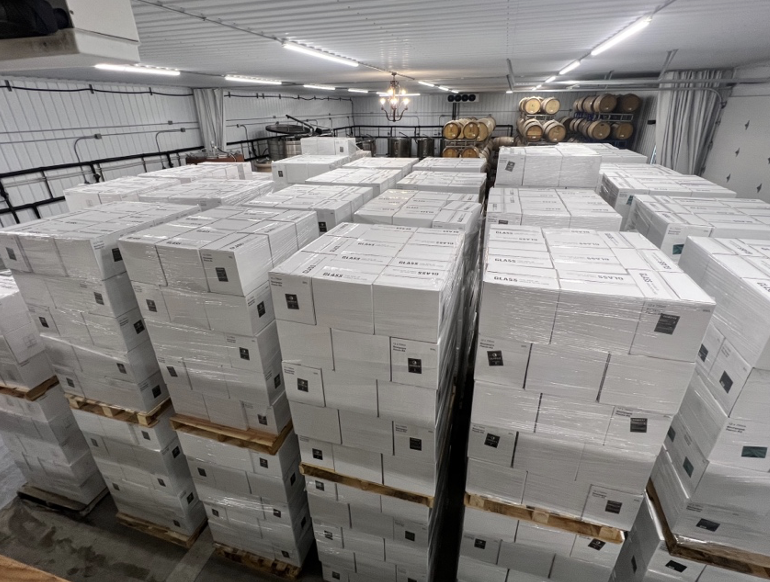
So we started our yeast tank here and bottled two days later! Now they will sit ‘en tirage’ which means the bottled wine will finish fermentation and sit on the lees (dead yeast) to soften out, increase mouthfeel and secondary flavors, and age.
We also had our Spring Wine Club Party in the barn with music and the amazing Chef Aaron who comes over from Surrell in Seattle, and and a Bottle Your Own Magnum event in the tasting room so it’s been a full and fun month. And that’s a wrap on April!
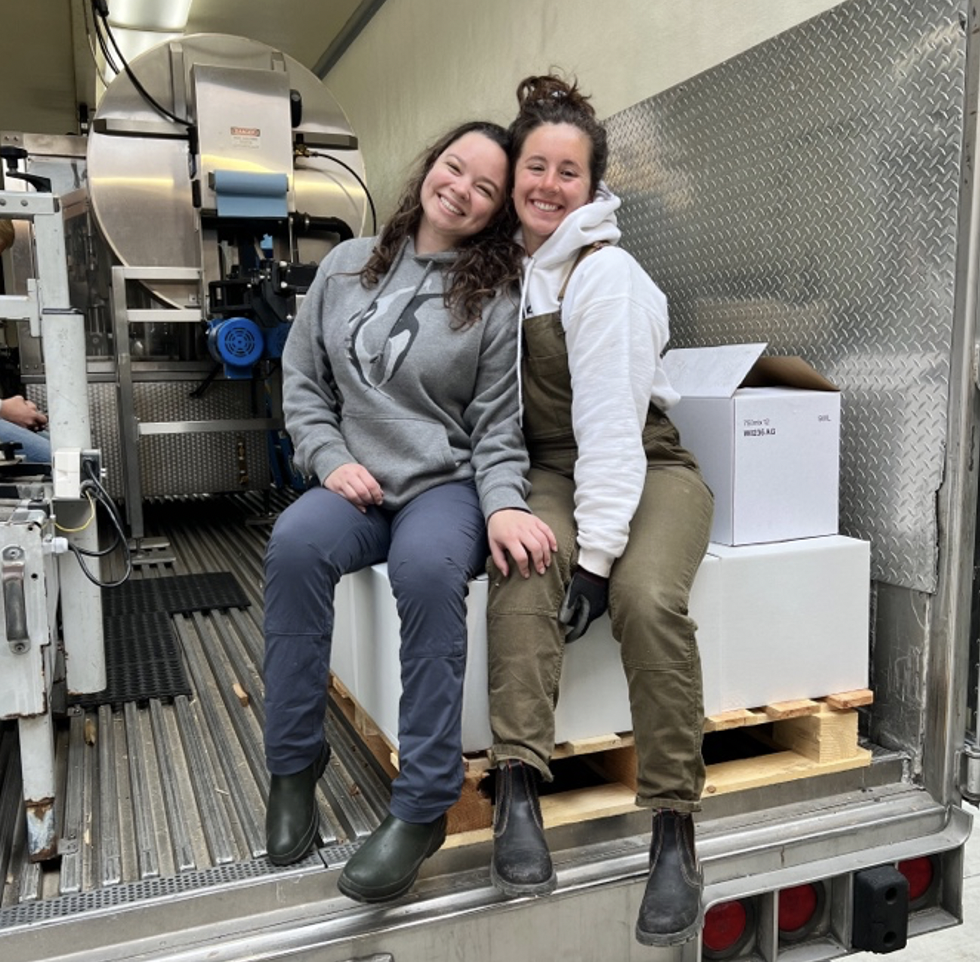
Traducido por Laurita Angulo
El principio y el final del proceso de vinificación- otra vez
Soy yo, la chica que anteriormente dijo que no teníamos grandes eventos fríos de los que preocuparnos y que solo estábamos esperando la brotación … ¿traería la mala suerte? ¡Creo que todos podemos decir que el fenómeno que tuvimos este abril fue uno de los más extraños que jamás hayamos experimentado! Este mes ha estado lleno de experiencias de aprendizaje, todavía esperando la brotación y temperaturas en los 50, así que realmente no ha cambiado mucho aquí desde la última vez que escribí, pero estoy aprendiendo el arte de la paciencia y sé que llegaremos.

El Comienzo: Sangrado y brotación
Después de que podamos el mes pasado, el calentamiento del suelo significa que vemos una de las primeras señales de que las vides se despiertan, el sangrado/flujo de savia! A medida que el suelo se calienta, las raíces comienzan a extraer humedad de las profundidades en un esfuerzo por restablecer el equilibrio de la planta nuevamente después de la latencia. Hacer que la tubería se mueva de nuevo, por así decirlo. Como las heridas de poda aún no se han endurecido, la presión se acumula y lentamente gotea constantemente a través de las superficies abiertas. En un día soleado cuando todo el bloque está en movimiento, puedes mirar a tu alrededor y ver el reflejo de la luz en cada gota de cada espolón de cada vid. Puede ser todo un espectáculo. Notarás en la primera imagen que a veces el goteo constante empapa la madera.

Asistí a un evento de fungicidas en Hood River, Oregón, para aprender más sobre el moho polvoroso y la pudrición del manojo de botritis y quedé completamente asombrado al ver todas las flores de manzano y cerezo y lo brillante que era el valle de Yakima. He ahí mi impaciencia ya que todavía no teníamos nada de eso en Chelan. ¡La semana siguiente me desperté a 5 pulgadas de nieve y advertencias de temperaturas bajo cero! ¡Iba en el automóvil a las 5 a.m. camino a Prosser para otro seminario a través del Grupo técnico de vinos de Washington, por lo que no tengo fotos de la bodega, pero lo estaba viendo en todas las redes sociales!

Recuerdo años atrás cuando había advertencias de congelación (aunque mucho antes y nada como esto) y me despertaba por la mañana con el ruido de las máquinas de viento en mi patio trasero y el humo en el aire de las ollas de barro. Jaime y algunos de los otros muchachos del equipo estarían despiertos toda la noche, avivando los fuegos junto a las cerezas y haciendo funcionar los ventiladores para tratar de proteger los pequeños capullos y evitar que se congelaran. Cuando llegué a Prosser esa mañana, no pude evitar pensar en todos los granjeros, desde Walla Walla hasta Horse Heaven Hills y Prosser, luchando contra la helada, muchos de ellos en la brotación, que es el momento más crucial y cuando absolutamente no quieres una helada tardía porque puede arruinar los cultivos, y me di cuenta de que mi impaciencia era algo bueno y que nuestros cogollos cerrados y apretados estaban a salvo.

Vi fotos y videos de tantos colegas en sus viñedos a todas horas, y mi corazón definitivamente estaba con ellos. Sadie estaba tomando algunas medidas increíbles de protección contra las heladas, como usar los rociadores junto con las máquinas de viento, para mantener los cogollos aislados por medio de una capa de hielo que se mojaba constantemente para evitar que se congelaran, y sus fotos e historias son absolutamente fascinantes. ¡Mi mente no alcazaba a comprender que en algunos lugares en California ya estaban floreciendo y ya tenian un pie más de crecimiento!
Después del susto por el frío, aprendí a encender y lavar las líneas de riego para que estuvieran listas para usar. Todo el mundo por aquí dice que la brotación ocurre a mediados de abril y ya estamos muy cerca del final… pero todavía estamos un poco lentos y el 25 de abril encontré el único capullo en todos nuestros 3 bloques que finalmente estaba abierto. ¡Vamos Picardán! Hay algunas vides que están increíblemente cerca, probablemente dentro de uno o dos días, y Clairette Blanch y Syrah también están muy cerca.

El final: embotellado
¡Actualización rápida de la bodega, junto con todo lo demás que está sucediendo! ¡Embotellamos todos nuestros tintos de 2020 que mezclamos y trabajamos el mes anterior! No es factible desde el punto de vista financiero o espacial para las bodegas pequeñas tener una línea de embotellado de tiempo completo incorporada, y el proceso de “ordeñar” más lento y laborioso puede ser difícil dependiendo del tamaño del lote, ¡así que hay un gran invento llamado camiones embotelladores!

Hacemos 3 grandes embotellados al año por lo que poder programarlos junto con la preparación de las botellas y el corcho es perfecto para nosotros. Básicamente, el montacargas trae una paleta de botellas y una persona levanta y voltea una caja de botellas sobre la mesa, donde luego una segunda persona sostiene y sacude las botellas hacia el transportador. En este punto, el sistema de embotellado automático sopla el polvo de la botella, la llena, la tapa y la etiqueta, y la escupe por el otro lado, donde dos personas más revisan las etiquetas y las vuelven a colocar en las cajas. Bajan por una rampa donde se etiquetan las cajas y luego se colocan en paletas donde, una vez llenas, se envuelven y se trasladan al interior. Es todo un proceso, un día completo de pie, levantando y cargando cosas. ¡Tenemos un equipo increíble y mi querida amiga Bernadette incluso vino a ayudar! Después de mover dos lotes pequeños a nuestra fecha de agosto, ¡pudimos embotellar 62 botellas por minuto, 2561 cajas de vino, para un total de 30,732 botellas!

¡Tenemos un viejo llenador de 6 botellas que usamos para nuestro espumoso Clairette Blanche 2021! En mi último trabajo, viajaba a Gruet, la bodega de vino espumoso en Nuevo México y una gran razón por la que me encanta los vinos espumosos Methode Champenoise . Allí creábamos un gran cultivo de levadura al comienzo de las dos semanas, iba todas las mañanas a las 3 a.m. para el trabajo de viabilidad bajo el microscopio, y luego inoculábamos los tanques todos los días y embotellábamos al mismo tiempo que volvíamos a llenar el tanque de levadura. Aprendí bastante las veces que pude ayudar con eso y siempre es divertido poder trabajar con levadura para algo más que la cosecha.

¡Así que comenzamos nuestro tanque de levadura aquí y embotellamos dos días después! Ahora se sentarán
‘en tiraje’, lo que significa que el vino embotellado terminará la fermentación y se asentará sobre las lías (levadura muerta) para ablandarse, aumentar la sensación en la boca y los sabores secundarios, y envejecer.
También tuvimos nuestra fiesta Spring Wine Club en el granero con música y el increíble chef Aaron que viene de Surrell en Seattle, y un evento Bottle Your Own Magnum en la sala de degustación, así que ha sido un mes completo y divertido. ¡Y así terminamos en abril!



Join the Conversation